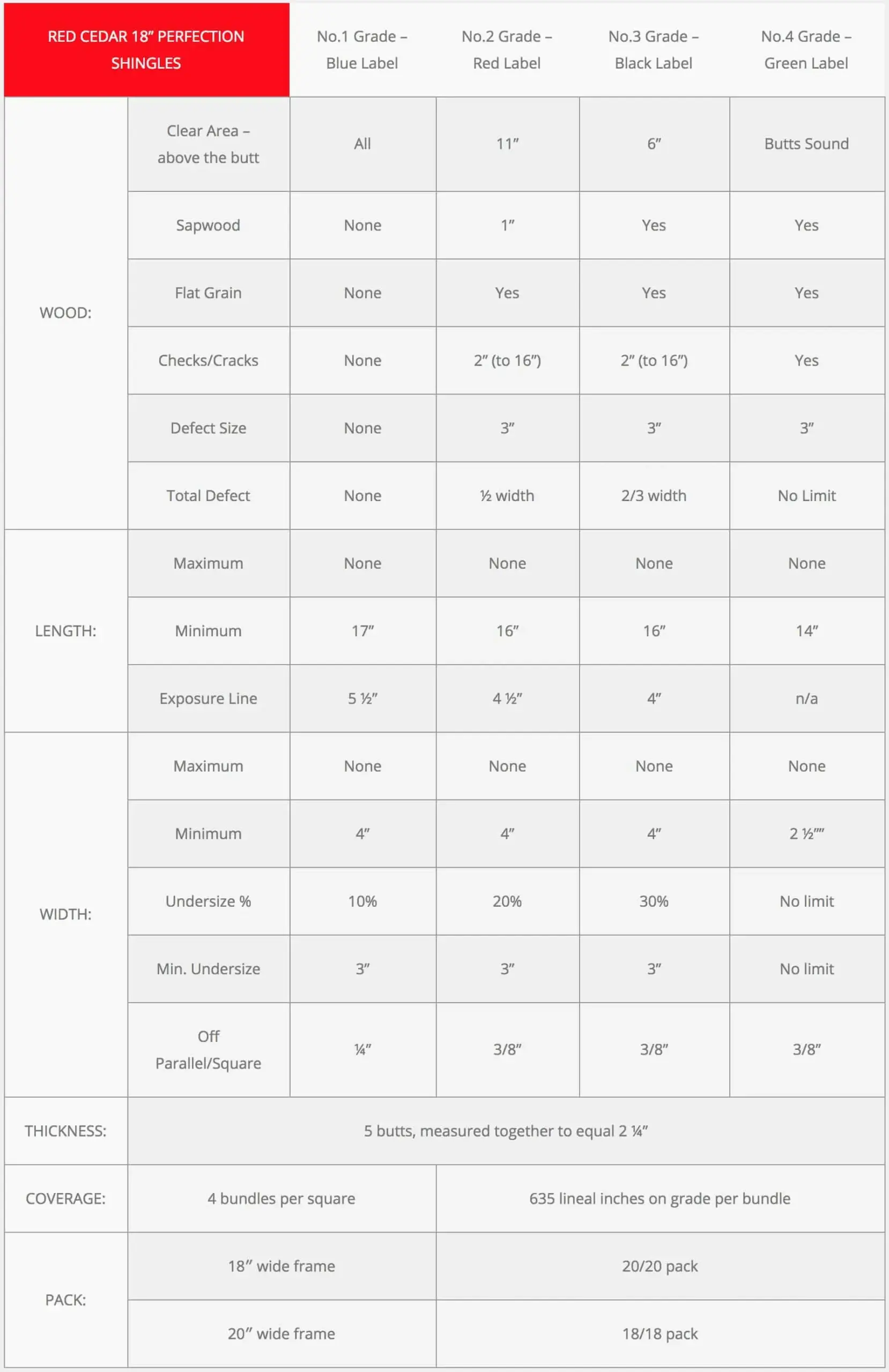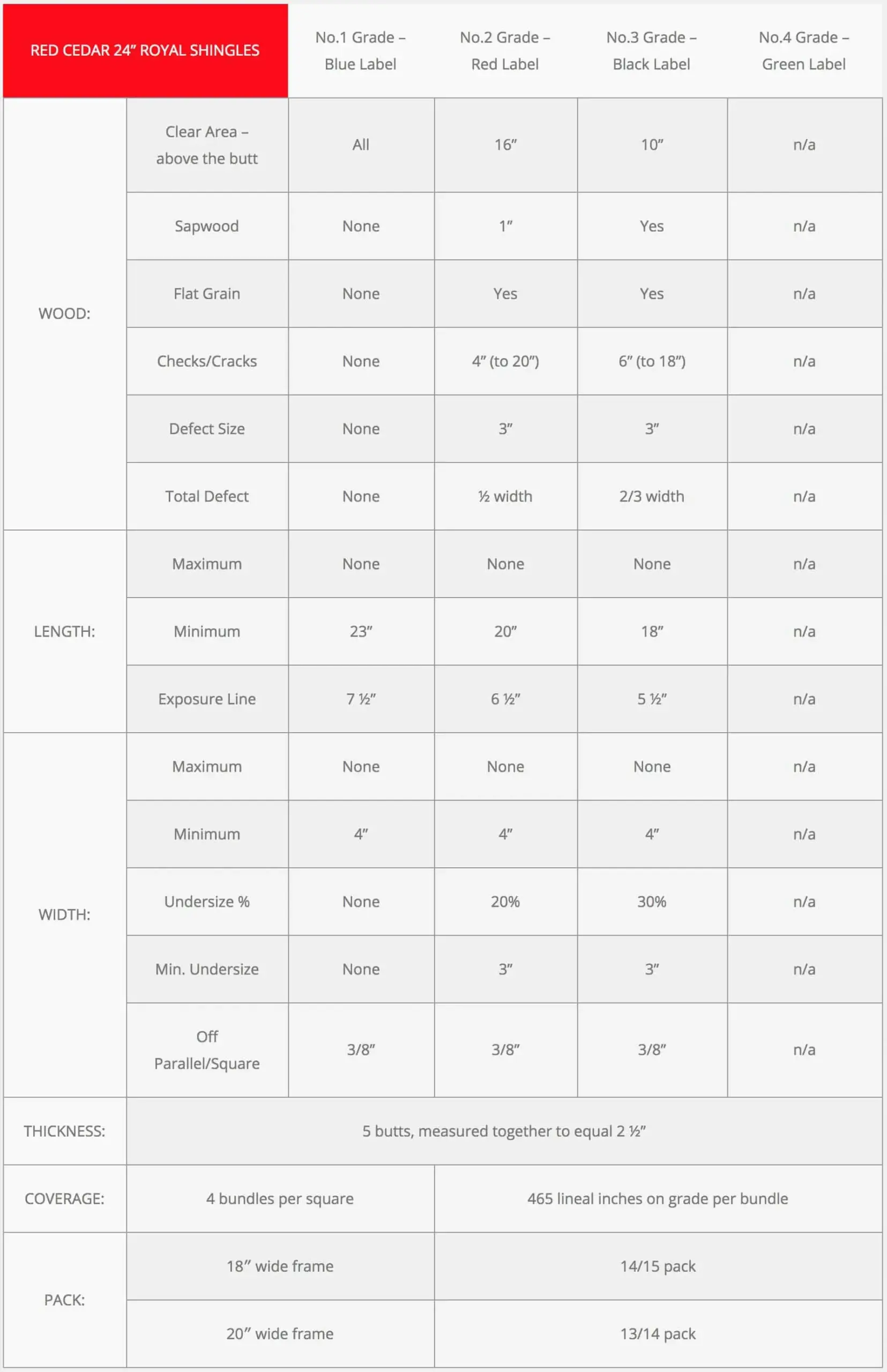ROOF SHINGLES GRADING RULES
An Explanation of the grades:
Wood is a natural building material. As a result, it will exhibit characteristics that in certain instances will not preform to the function that is intended. Those characteristics would then be considered defects. For example, a cedar shingle that is predominately sapwood does not contain the natural resins for decay resistance in the sapwood portion of the shingle. In the event this particular shingle is used on a roof, the sapwood will rot at a far greater rate than the portion of heartwood that is contained in the shingle. Therefore, while the sapwood may be visually appealing to the eye, it is considered a defect#3 siding shingles in that it will not perform to meet the expected task. As a result, grading rules for lumber and shingles are developed. A set of grade rules indicate the minimum allowable quality for a given classification.
The Natural Characteristics header refers to the various type of defect that may occur in a given shingle. In reference to those Natural Characteristics, the shingles are categorized into grades. In our case we grade our shingles into four grades.
Colouration: As a tree grows, it will pick up different minerals that may lead to different colours in the wood. You can see different colourations in the wood of the shingles on the right. This difference in colouration is not considered a defect in that it does not effect the overall performance of the shingle in a given application.
Wane is a physical run out of the wood in a given shingle. The wood will taper off to nothing in a given spot, usually on an edge. This characteristic is unacceptable in a #1 shingle while a certain degree is acceptable in a #2 or #3 shingle.
Sapwood is the new growth of a tree. It conducts the sap throughout the tree from root to leaf and back again. Sapwood does not contain the resins in a cedar tree that prevent decay like the heartwood contains. Therefore, care must be taken to minimize the amount of sapwood that would appear in a roofing shingle.
Check is an actual physical crack in the shingle. It is acceptable to varying degrees on he tip of a given shingle in relation to its individual width and its intended application. In a #2 shingle that is 8″ wide a check that is four inches long, that appears over 10″ from the butt of the shingle is still acceptable.
Grain is a reference to the slope the grain appears on in relation to the orientation of the cuts to make the shingle. So; from the butt of a #1 shingle if the grain slopes to one side or another greater than 4″ through its length it becomes a #3 shingle regardless if it is the only defect that appears in the shingle.
On occasion a tree will become damaged through its life. The damaged area will fill with pitch in order to protect the tree, much like us when we get cut. This damaged area becomes a scar on the tree as well. These pitch pockets and streaks are an undesirable defect in a roofing shingle in that the pitch can wash out and leave a hole or pit in the shingle. If roofing with #2 shingles a considerable degree of this defect is allowable. Care must be taken in the location that a shingle exhibiting these defects is crossed upon. Fortunately however, in my experience, I come across few shingles like this and usually grade them into our utility grade.
Spike knots are knots that appear in an orientation across the width of a shingle. If they extend too far across the shingle, the shingle can leak or break off at the spike knot.
16″ FIVE X SHINGLES

18″ PERFECTIONS

24″ ROYALS


